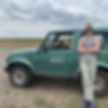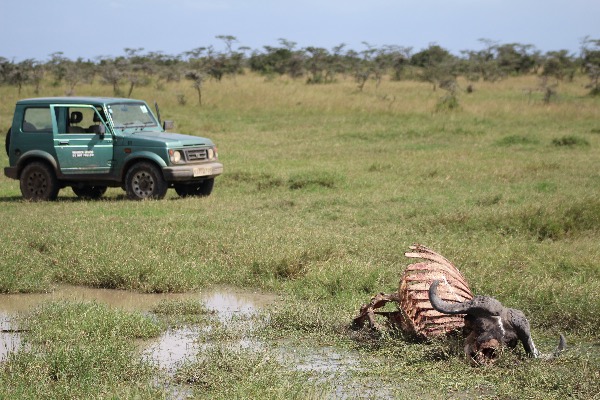What can collaring data, spoor and scat tell us about lion connectivity?
- Mary Burak
- Feb 4, 2021
- 3 min read
Updated: Oct 17, 2024

My name is Mary Burak and I am a PhD candidate at Yale University. I am an interdisciplinary scientist studying ecology, evolution, and conservation biology. I work in collaboration with Lion Landscapes to study lion connectivity across Laikipia, Kenya. I have always been fascinated by the trade-offs between wildlife conservation and land development, as well as human-wildlife conflict that can arise from this. How can these trade-offs be optimized to ensure the best outcome for both humans and wildlife?
I view landscapes as checkerboards, and coexistence as the arrangement of different human and wildlife pieces in space. In my research, I use spatial and genetic data to understand where and how much lions are connected within Laikipia. We are specifically evaluating how landscape features – everything from water availability to human activity – helps, hinders, or has no effect on lion connectivity.
The spatial data that I use includes collaring data as well as visual and spoor sightings reported by the Laikipia Lion Rangers in SMART. Genetic data for research is provided by the lion scat, collected by myself and numerous collaborators over the last two years. Perhaps some of you reading this have seen me on a Laikipia conservancy driving around in my tiny green Suzuki and carrying my trusty red bucket filled with rubber gloves and specimen tubes!
Properties in Laikipia have been extremely kind in allowing me to sample for lion scat, and many individuals have helped me along the way. There have been many days spent circling and re-circling the collection area, filled with the smell of rotting carcasses and of course the smell of the scat!
I’ve sampled opportunistically (morning drives looking for fresh scat on the roads) but most successfully at prey kill sites. Large buffalo or zebra kills can be easy to see, and I have been fortunate enough to collect anywhere from 5 to 12 different samples from each kill site! I’m happy to report that scat collection was completed prior to the impacts of COVID-19. I currently have more than 200 lion scat samples collected across 8+ Laikipia properties. For insurance, some of these scats are repeats from the same individual. Nevertheless, we are excitedly awaiting genetic results because this will be a large ecosystem-wide sample size!
All of this spatial and genetic data helps to paint a picture of where lion connectivity corridors exist, the rate at which they are used, and the landscape features that most affect these corridors. In the end, this will help us to infer which situations can promote human-lion coexistence or ways in which we can proactively mitigate conflict.
As you may have guessed, COVID-19 has unfortunately delayed this project. DNA analysis has been postponed as laboratories temporarily close, equipment deliveries are delayed, and offices significantly limit their number of occupants. I am currently working remotely from my home in the U.S. but am still progressing with research regarding Laikipia lions each day. I am currently assisting Lion Landscapes in their spatial analysis of lion collar data. The data will offer a spatial perspective to lion connectivity – an advantageous prefix to our genetic connectivity results. In the end, the spatial and genetic data provides both short-term (i.e., day-to-day) and long-term (i.e., over generations of lions) information which will paint a fuller picture of a coexistence landscape.
In a strange twist of fate, this era of working from home has afforded me the opportunity to re-focus on the analytical tools I am using for my research. I have been able to learn about newer, cutting-edge statistical approaches. I have begun translating these statistical approaches into computer code, and am excitedly mapping out future analyses and continued applications of our data. Mainly, I am focusing on coding predictive models that can use our current lion data to predict future lion population and movement dynamics under different landscape scenarios.
Thankfully, adjusted laboratory protocols are now being solidified and I optimistically hope to resume DNA analyses in 2021. While genetic analysis is normally a very prolonged process, I never quite imaged it taking this long thanks to COVID-19!
As always, a big ‘thank you’ to everyone that is helping this project in any way, in any year that it has been carried out. While I had hoped there would have been some preliminary genetic results by now, I look forward to getting back into the laboratory and I can’t wait to share the results as soon as possible!
Mary presenting her research at Pathways Conference in Limuru, Kenya, February 2020
.png)













